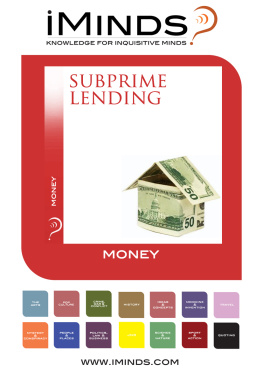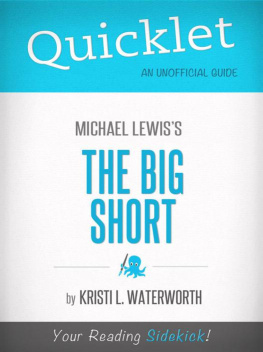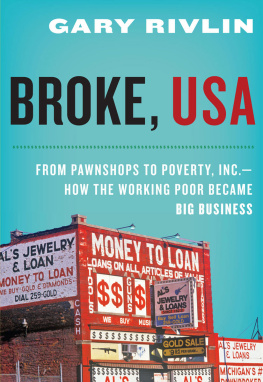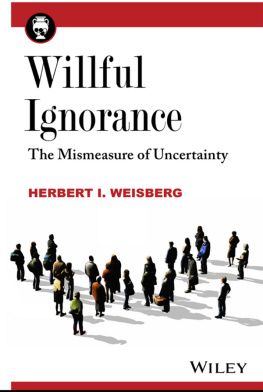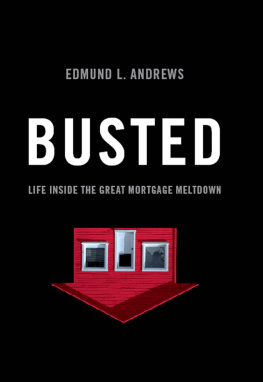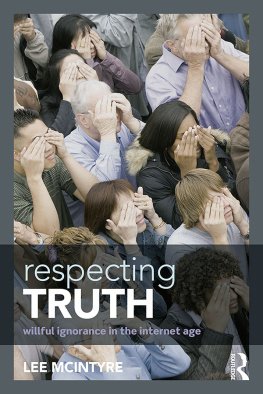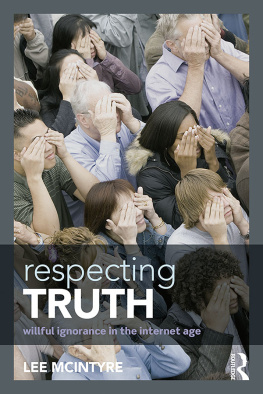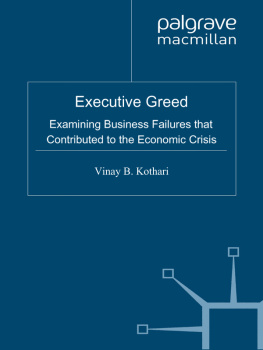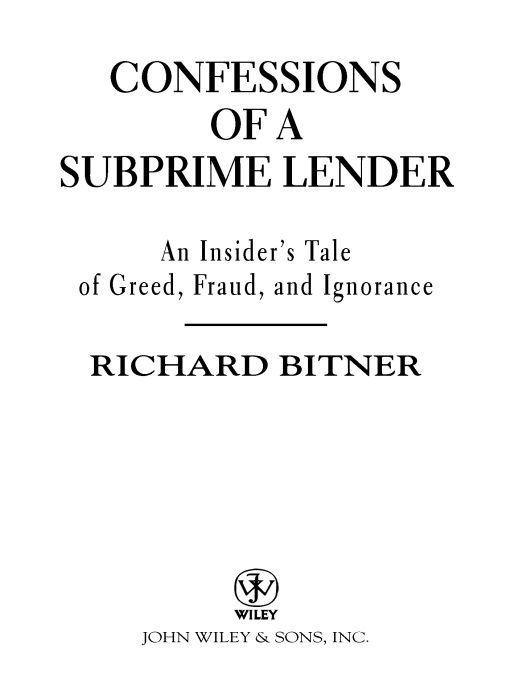Table of Contents
To
Deborah, Andrew, and Matthew
For always inspiring me
To Mom and Dad,
Thanks for never letting me forget
the difference between right and wrong
ACKNOWLEDGMENTS
There are numerous people to thank for their contributions. First, my thanks to Michele Burke and Rich Trombetta, who provided critical feedback during the earliest phase of my writing and encouraged me to keep going.
Id like to acknowledge Ryan Miller, Rob Legg, Vince Dimare, Annie Nguyen, Tres Petree, and Frank Partnoy for their contributions. I also want to thank the numerous mortgage industry professionals who provided their insights but asked not to be identified.
Lisa Gold, my editor, was instrumental in helping me work through the writing process to produce the final product. You are a gem.
To my former business partners, Mike Elliott and Ken Orman, for helping to build Kellner Mortgage Investments. You were the greatest business partners a person could have asked for.
In addition, Id like to recognize Bob Kellner for his patience, guidance, and wisdom. Bob truly embodied the spirit that was Kellner Mortgage.
Finally, a special thanks to Ken Orman. Your willingness to help me work through the details of this story was invaluable. This book would not have been possible without your help.
INTRODUCTION
A year ago, I never thought there would be a need for me to write about the subprime industry. I knew the business was flawed, but it seemed inconceivable the events of 2007 would play out as they did. An entire segment of the lending industry has disappeared and the news gets worse by the day. Home sales have slowed, prices have fallen, credit has tightened, and the true extent of this problem, I believe, is still unknown. It has left many people wondering how bad the crisis will get.
As a 14-year veteran of the mortgage industry, five of which were spent as the owner of a Dallas-based subprime lender, Kellner Mortgage Investments, I sat front and center in the middle of this debacle. Compared to the big boys like Countrywide Financial or Washington Mutual, my firm was a small player. At our peak, we were on pace to close $250 million a year in subprime mortgagesnot an inconsequential figure, but only a fraction of what the largest players were funding.
Being a lender of this size, however, afforded me a unique perspective. A typical day involved working with small mortgage brokers as well as the largest mortgage securitizers in the country. I saw the inner workings of the subprime industry from one end to the other.
Although this book is based on my experiences as a lender, its also representative of how the entire subprime industry operated. Part of my research included interviews with numerous colleagues, many of whom worked for, managed, or owned subprime mortgage companies. I wanted to be certain that the business practices I describe were typical of the subprime industry and not isolated to my world. The insight and feedback from these colleagues were invaluable to my portrayal of the volatile mortgage business.
This is the second go-round for this book. It was originally developed as a self-published work called Greed, Fraud & Ignorance: A Subprime Insiders Look at the Mortgage Collapse, which I began writing in August 2007. I knew we were facing a problem of historic proportions and I felt the United States was about to experience the worst business debacle in modern history. Little did I know how right Id be.
The problem is huge in part because so many things went wrong. First, unlike most business disasters driven by the malfeasance of a few leaders sitting at the top of the food chain, the current crisis is a result of systemic problems that extended from one end of the industry to the other. There is no single person or group who bears the greatest responsibility. Second, with 65 percent of all Americans owning a home, no other business disaster has had such a broad impact on so many people. Third, once the real estate market stops its current freefall and the gains and losses are tallied, both from the rise and fall in home equity and from losses sustained in the mortgage-backed securities market, the loss figure will reach into the trillions. Yes, trillions.
I started writing this book believing that somebody who experienced the debacle first-hand should tell the story. I quickly realized, however, that wasnt enough of a reason for writing. For me, there had to be more.
Having spent most of my business career in mortgage lending, Ive generally considered myself to be an industry lifer. I want to see the mortgage industry find its moral compass and get back to the business of intelligently lending money. This cant happen without some significant changes taking place. While this book is an insiders perspective on what went wrong, the final chapter focuses on the solution. My hope that these critical changes will be made became, ultimately, my motive for writing.
Before John Wiley & Sons, Inc. entered the picture, Dan McGinn at Newsweek wrote an article about the earlier version of this book. Since subprime had become the newest four-letter word in the American vernacular, I knew there would be some negative reactions, but nothing prepared me for the unmitigated hatred that was directed my way. Like it or not, by putting pen to paper I had become the poster child for the subprime industry. I was guilty by association. Reading through the several hundred comments that were posted online, which recommended everything from jail time to my being drawn and quartered, Id be lying if I said they didnt bother me. If youve been raised to believe that you should do right by others and you attempt do so on a daily basis, its impossible not to be affected by such comments.
Let me be clear. Im not looking for sympathy or validation. I hang my hat on the fact that during my five years as a subprime lender, my firm had an average delinquency rate of less than 3 percent. If you compare that to the current subprime delinquency rate, which hovers around 20 percent, it means my company was effective at putting borrowers into mortgage loans they could afford. That is the only criterion, in my opinion, by which a lender should be judged.
That aside, one thing is clear. Even those of us who operated with the best of intentions, and who believed in the economic benefits subprime lending had to offer, found it increasingly difficult to effectively manage risk during the last few years before the collapse. It was also difficult just to stay competitive in the marketplace. When that happens, errors in judgment take place and mistakes get made. Certainly there was no shortage in that department.
This book is about only the subprime industry, but I hope most readers will understand that the mortgage crisis is not isolated to the subprime segment of the mortgage business. Significant mistakes were also taking place with other mortgage product offerings, including those for borrowers who had good credit. Theyve just taken longer to show up in the delinquency reports. I discuss this more in the final chapter.
Although the book chronicles the history of my organization, Confessions of a Subprime Lender is not about the actions of a single person, company, or even a segment of the lending business. Its a look at how the mortgage industry collectively lost sight of its intended purpose and set off what is arguably the worst credit crisis in modern history.


